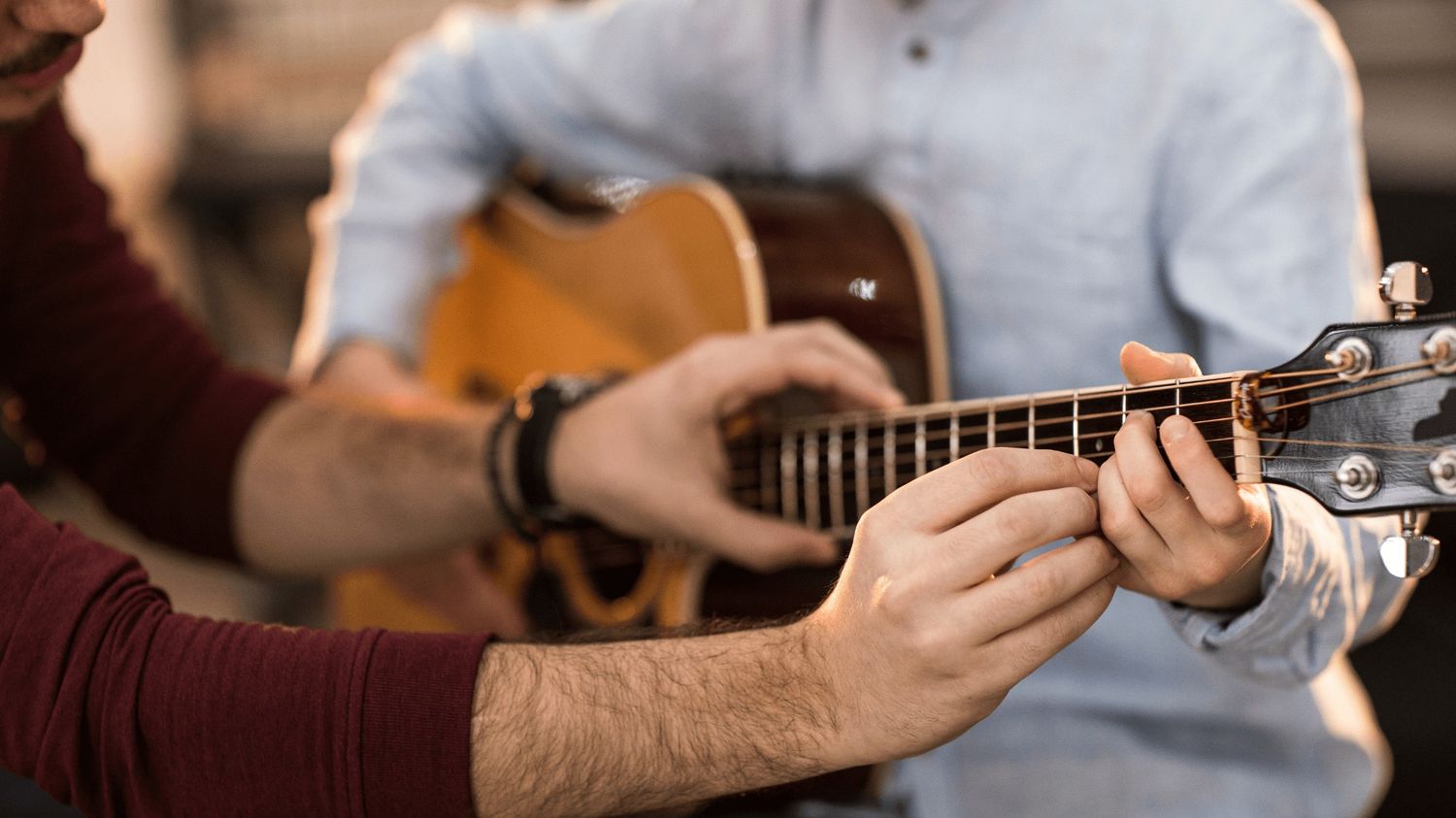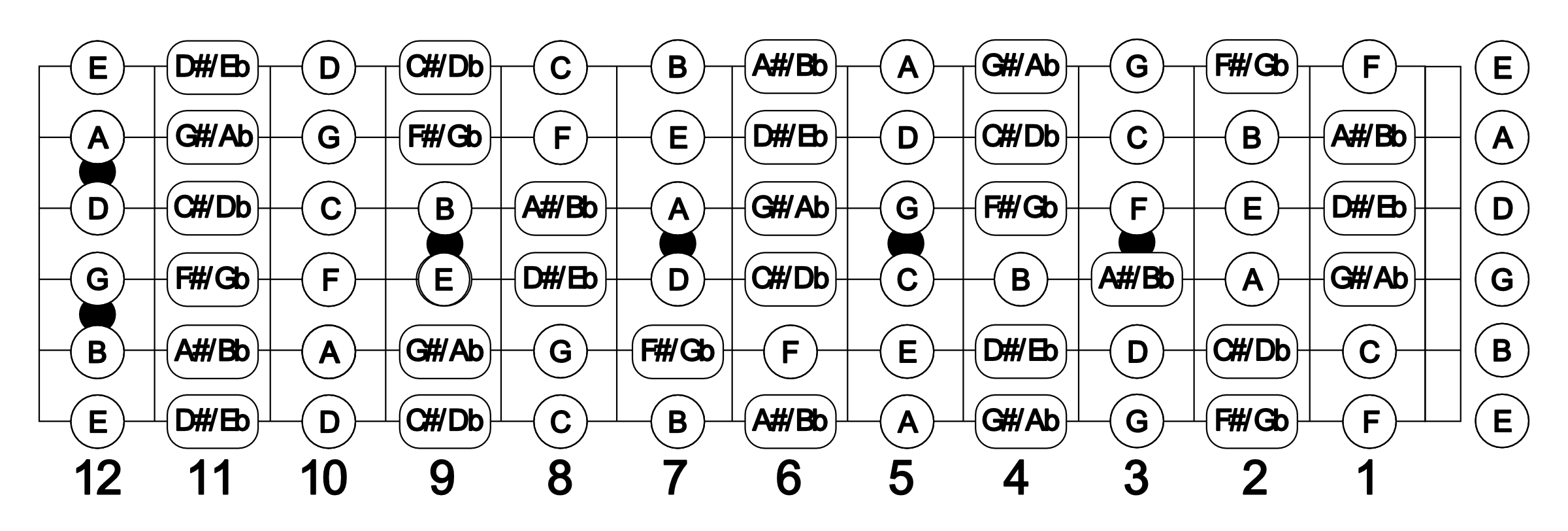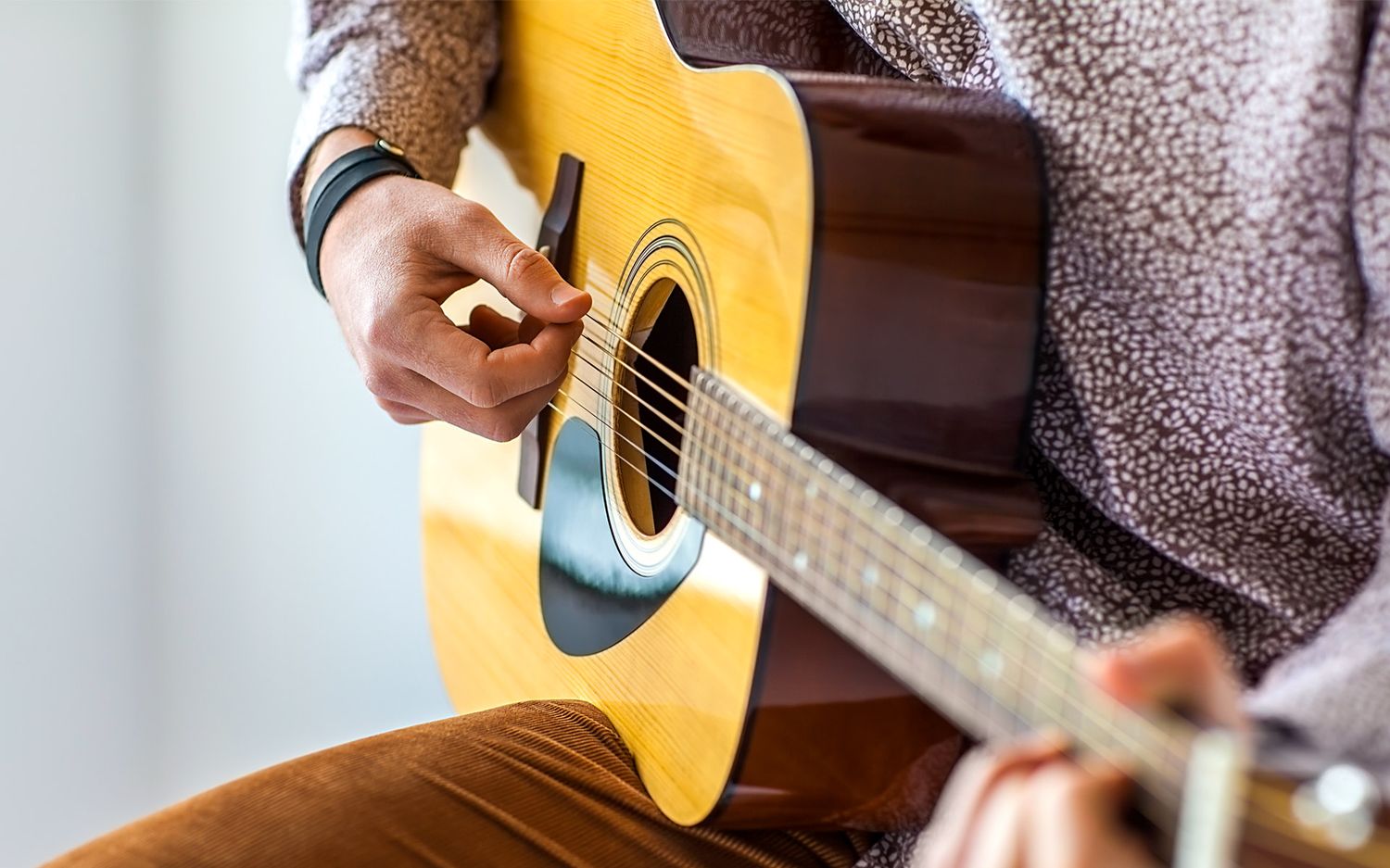Home>Instruments>Guitar>What To Learn First On Guitar


Guitar
What To Learn First On Guitar
Published: February 15, 2024
Learn the essential basics of playing guitar with our comprehensive guide. Master the fundamentals to kickstart your guitar journey today.
(Many of the links in this article redirect to a specific reviewed product. Your purchase of these products through affiliate links helps to generate commission for AudioLover.com, at no extra cost. Learn more)
Table of Contents
Introduction
So, you've decided to pick up the guitar and embark on a musical journey. Congratulations! Learning to play the guitar is an incredibly rewarding experience that offers a lifetime of enjoyment. Whether you dream of strumming along to your favorite songs, performing in a band, or simply expressing yourself through music, the guitar is a versatile and captivating instrument.
As a beginner, it's normal to feel a mix of excitement and uncertainty. You might be wondering where to start, what to learn first, and how to navigate the vast world of guitar playing. Fear not! This guide will provide you with a roadmap for your initial steps in mastering the guitar.
Learning to play the guitar is not only about mastering the technical aspects of the instrument; it's also about developing a deep connection with music. As you progress, you'll discover the joy of creating melodies, expressing emotions, and connecting with others through your music. It's a journey that will challenge and inspire you in equal measure.
Throughout this guide, we'll cover the fundamental concepts and skills that every aspiring guitarist should prioritize. From understanding the basic anatomy of the guitar to learning essential chords, strumming patterns, and simple songs, each step will lay a solid foundation for your musical endeavors.
Remember, the key to mastering the guitar is patience, practice, and perseverance. Every guitarist, regardless of their level, started as a beginner. Embrace the learning process, celebrate your progress, and don't be afraid to make mistakes. With dedication and a passion for music, you'll find yourself strumming and picking with confidence in no time.
So, grab your guitar, tune up, and let's dive into the essential elements of learning to play this iconic instrument. Get ready to unleash your creativity, express your unique musical voice, and embark on an enriching journey that will undoubtedly bring joy and fulfillment to your life.
Basic Guitar Anatomy
Before diving into playing the guitar, it’s essential to familiarize yourself with its basic anatomy. Understanding the various parts of the instrument will not only help you communicate effectively with other musicians but also assist you in maintaining and caring for your guitar.
Here are the key components of a standard acoustic or electric guitar:
- Headstock: Located at the top of the guitar, the headstock houses the tuning pegs, which are used to adjust the tension of the strings, thereby affecting the pitch of the notes.
- Neck: Extending from the body of the guitar, the neck is where the fretboard and frets are situated. This is where you’ll press the strings to produce different notes and chords.
- Fretboard: The fretboard is a flat, usually wooden surface on the neck of the guitar, marked with frets. It is where you’ll position your fingers to play specific notes and chords.
- Body: The body of the guitar is the large, hollow or solid portion that amplifies the sound produced by the vibrating strings. It also houses the sound hole (in acoustic guitars) or pickups (in electric guitars).
- Bridge: The bridge holds the strings in place at the lower end of the guitar. It plays a crucial role in transmitting the string vibrations to the body of the guitar, contributing to the instrument’s resonance.
- Sound Hole (Acoustic Guitars): This is a hole on the body of an acoustic guitar, designed to project the sound produced by the vibrating strings, enhancing the instrument’s acoustic properties.
- Pickups (Electric Guitars): In electric guitars, pickups are electromagnetic devices that capture the string vibrations and convert them into electrical signals, which are then amplified to produce sound.
By familiarizing yourself with these basic guitar components, you’ll gain a deeper understanding of how the instrument produces sound and how various adjustments can affect its playability and tone. As you continue your guitar journey, this knowledge will prove invaluable in troubleshooting any issues and exploring different playing styles and techniques.
Tuning the Guitar
One of the first and most crucial skills every guitarist should master is tuning the instrument. Proper tuning ensures that the strings produce the correct pitches, allowing you to play in harmony with other musicians and enjoy a pleasing sound.
Standard tuning for a six-string guitar, from the lowest-pitched string to the highest, is EADGBE. Here are the steps to tune your guitar using a tuner:
- Get a Tuner: Acquire a digital tuner, clip-on tuner, or a tuning app for your smartphone. These tools provide visual or audio cues to help you adjust the pitch of each string accurately.
- Tune the Low E String: Start by plucking the lowest-pitched string (E) and adjust the tuning peg until the tuner indicates that the note is in tune.
- Move to the A String: Proceed to the fifth string (A) and repeat the process of adjusting the tuning peg until the note matches the correct pitch.
- Tune the D, G, B, and High E Strings: Follow the same procedure for the remaining strings, ensuring that each string corresponds to the standard tuning notes.
Once your guitar is in tune, it’s advisable to regularly check and adjust the tuning, as environmental factors and playing can cause the strings to go out of tune. Developing a good ear for pitch and learning to tune your guitar by ear are valuable skills that will serve you well in various musical contexts.
Remember, a well-tuned guitar not only sounds pleasing to the ear but also makes the learning process more enjoyable and rewarding. It allows you to focus on refining your technique and exploring the instrument’s potential without the distraction of dissonant or off-key notes.
Mastering the art of tuning your guitar is a fundamental step in your musical journey, laying the groundwork for enjoyable practice sessions and musical collaborations. With your guitar perfectly tuned and ready to resonate with beautiful harmonies, you’re now prepared to delve into the next essential aspect of playing the guitar.
Holding the Guitar
Learning how to hold the guitar correctly is essential for comfort, technique, and overall playing experience. Whether you’re sitting or standing, the way you position the guitar greatly influences your ability to fret chords, strum accurately, and access different areas of the fretboard.
When sitting down:
1. Position the guitar: Sit up straight in a chair without arms, and place the guitar on your right leg (if you’re right-handed) or left leg (if you’re left-handed). The waist of the guitar should rest comfortably on your leg, and the neck should point slightly upward.
2. Support the neck: Use your non-dominant hand to support the neck of the guitar, allowing your fretting hand to move freely along the fretboard. Your thumb should be positioned behind the neck, providing stability and facilitating proper finger placement for chords and notes.
3. Align the strumming arm: Position your dominant arm over the body of the guitar, ensuring that your strumming hand can comfortably reach the strings. Maintain a relaxed posture, with your forearm resting lightly on the top of the guitar.
When standing up:
1. Use a guitar strap: Attach a comfortable and adjustable guitar strap to your instrument, allowing it to hang at a height that feels natural and allows easy access to the fretboard and strings.
2. Position the guitar: Adjust the strap so that the guitar rests against your body at a comfortable angle. The neck of the guitar should be within easy reach of your fretting hand, enabling you to navigate the fretboard without strain.
3. Maintain a relaxed posture: Whether you prefer to play with the guitar hanging lower or higher, strive to maintain a relaxed and balanced posture. This will facilitate fluid movement across the fretboard and enhance your overall playing comfort.
By mastering the art of holding the guitar, you’ll establish a strong foundation for developing proper playing technique and enjoying a comfortable and ergonomic playing experience. With your guitar positioned correctly, you’re now ready to delve into the exciting world of chords, strumming patterns, and melodies that define the unique language of the guitar.
Basic Chords
Chords form the backbone of guitar playing, allowing you to accompany songs, create harmonies, and express a wide range of emotions through music. As a beginner, mastering a few essential chords will provide you with the building blocks for countless songs and musical styles.
Here are some basic open chords that every aspiring guitarist should learn:
- C Major (C): This chord is played by placing your ring finger on the third fret of the fifth string, middle finger on the second fret of the fourth string, and index finger on the first fret of the second string. Strum from the fifth string downwards, avoiding the sixth string.
- G Major (G): Position your ring finger on the third fret of the sixth string, middle finger on the second fret of the fifth string, and pinky finger on the third fret of the first string. Strum from the sixth string downwards, avoiding the fifth string.
- D Major (D): Place your index finger on the second fret of the third string, middle finger on the second fret of the first string, and ring finger on the third fret of the second string. Strum from the fourth string downwards, avoiding the fifth and sixth strings.
- E Minor (Em): This chord is formed by placing your index and middle fingers on the second fret of the fifth and fourth strings, respectively. Strum all six strings for a full, resonant sound.
- A Minor (Am): Simply position your middle finger on the second fret of the fourth string, allowing you to strum all six strings for a melancholic and versatile chord.
Learning these basic chords will not only familiarize you with common finger placements but also help you develop strength, dexterity, and muscle memory in your fretting hand. Practice transitioning between these chords smoothly, ensuring that each note rings clear and true.
As you progress, experiment with different strumming patterns and chord progressions, allowing your creativity to flourish. Remember, every accomplished guitarist started by mastering these foundational chords, and they continue to serve as the cornerstone of their musical expression.
By embracing these fundamental chords and incorporating them into your practice routine, you’ll open the door to a world of musical possibilities. With dedication and perseverance, you’ll soon find yourself strumming along to your favorite songs and discovering the joy of creating beautiful harmonies with your guitar.
Strumming Patterns
Mastering strumming patterns is essential for bringing rhythm and groove to your guitar playing. A well-executed strum can transform a simple chord progression into a captivating musical performance, adding dynamics and emotion to your playing.
Here are some common strumming patterns to get you started:
- Downstrokes Only: Begin by strumming downward with your pick or fingers in a consistent motion. This pattern is often used in energetic and driving rhythms, creating a strong and emphatic sound.
- Down-Up Strumming: Alternate between downward and upward strums, creating a steady and versatile rhythm. This pattern is ideal for a wide range of musical styles and can add complexity and nuance to your playing.
- Swung Strumming: Introduce a subtle swing to your strumming pattern by emphasizing the downbeat and lightly accenting the upstroke. This technique adds a laid-back and groovy feel to your playing, commonly heard in blues, jazz, and rock music.
- Arpeggiated Strumming: Instead of strumming all the strings simultaneously, pick or strum the individual notes of a chord in a flowing and melodic sequence. This pattern creates a delicate and intricate sound, perfect for ballads and introspective compositions.
As you practice these strumming patterns, focus on maintaining a steady rhythm and keeping your strums consistent and even. Pay attention to the dynamics of your playing, experimenting with variations in volume and intensity to convey different moods and emotions.
Additionally, listen to your favorite songs and observe the strumming patterns used by experienced guitarists. This will provide valuable insight into how strumming can shape the overall feel and atmosphere of a piece of music, inspiring you to develop your unique style and approach.
Remember, mastering strumming patterns is a gradual process that requires patience and attentive practice. By incorporating diverse strumming techniques into your playing, you’ll expand your musical repertoire and infuse your performances with depth and expression.
With each strum, you’ll unlock the rhythmic heartbeat of the music, allowing your guitar to resonate with captivating energy and emotion. Embrace the art of strumming, and let your guitar become a vessel for rhythmic creativity and musical storytelling.
Reading Guitar Tabs
Understanding how to read guitar tabs is a valuable skill that allows you to learn and play songs quickly and accurately. Guitar tablature, or “tabs” for short, provides a visual representation of the guitar’s fretboard, indicating which strings and frets to press to produce specific notes and chords.
Here’s a basic overview of guitar tabs and how to interpret them:
String Representation: In guitar tabs, each horizontal line represents a string, with the bottom line corresponding to the low E string and the top line representing the high E string. The numbers on the lines indicate which fret to press on the respective string.
Reading Numbers: When a number appears on a string in the tab, it indicates that you should press down on that particular fret while plucking or strumming the string. For example, if the number “3” appears on the low E string, it means you should press the third fret of that string.
Chords and Rhythms: Tabs also include symbols and notation to represent chords, strumming patterns, and other musical elements. For instance, a series of numbers stacked vertically on top of each other indicates a chord, with each number representing a different string to be fretted simultaneously.
Timing and Duration: While tabs provide guidance on which notes and chords to play, they do not explicitly indicate the timing or duration of each note. It’s essential to listen to the song and use your musical intuition to understand the rhythm and duration of the notes based on the original recording.
As you delve into the world of guitar tabs, you’ll find an abundance of resources online, including tablature websites and software that offer a vast library of songs across various genres. Whether you’re interested in classic rock anthems, contemporary pop hits, or timeless ballads, you’ll likely find tabs that align with your musical preferences.
By familiarizing yourself with guitar tabs and incorporating them into your practice routine, you’ll gain the ability to learn new songs efficiently and play them with confidence. Tabs serve as an accessible and intuitive tool for guitarists of all levels, offering a gateway to a diverse and inspiring repertoire of music.
Embrace the world of guitar tabs as a means to expand your musical horizons and deepen your understanding of the instrument. With each tab you explore, you’ll uncover new melodies, riffs, and chord progressions that enrich your guitar journey and fuel your passion for playing.
Basic Scales
Understanding and practicing basic scales is a fundamental aspect of guitar playing that enhances your dexterity, finger strength, and overall musical proficiency. Scales provide a structured framework for navigating the fretboard, familiarizing yourself with different tonalities, and laying the groundwork for improvisation and melodic expression.
Here are a few essential scales that every guitarist should explore:
Major Scale: The major scale is a foundational musical scale that forms the basis of countless melodies and harmonies. Its familiar sound is deeply ingrained in popular music and serves as a springboard for understanding chord construction and musical theory. The pattern of intervals in a major scale is whole step, whole step, half step, whole step, whole step, whole step, half step (W-W-H-W-W-W-H).
Minor Scale: The minor scale offers a contrasting yet equally important tonality, evoking emotions ranging from melancholy to introspection. It is widely utilized in various musical genres, including rock, blues, and classical music. The natural minor scale follows the pattern of intervals: whole step, half step, whole step, whole step, half step, whole step, whole step (W-H-W-W-H-W-W).
Pentatonic Scale: The pentatonic scale is revered for its versatility and melodic potential, making it a staple of improvisation and soloing. Its five-note structure simplifies the learning process while enabling expressive and emotive playing. The minor pentatonic scale, in particular, is a cornerstone of blues and rock guitar playing, offering a rich palette of musical possibilities.
As you familiarize yourself with these scales, focus on developing a fluid and even technique, ensuring that each note resonates clearly and vibrantly. Practice ascending and descending through the scales, gradually increasing your speed and accuracy as your muscle memory strengthens.
Moreover, explore the musical contexts in which these scales are commonly used, listening to iconic songs and solos that showcase their expressive potential. By immersing yourself in the sonic landscape shaped by these scales, you’ll gain a deeper appreciation for their relevance and versatility in the world of guitar playing.
Ultimately, the mastery of basic scales empowers you to communicate and emote through your instrument, laying the groundwork for creative exploration and musical fluency. Embrace the journey of scale practice as a gateway to unlocking the expressive power of the guitar and enriching your musical vocabulary.
Simple Songs to Practice
Embarking on your guitar journey is an exciting opportunity to apply your newfound knowledge and skills to real music. Practicing simple songs not only reinforces your understanding of chords, strumming patterns, and scales but also allows you to experience the joy of playing recognizable tunes from your favorite artists. Here are a few beginner-friendly songs to add to your practice repertoire:
- “Knockin’ on Heaven’s Door” by Bob Dylan: This timeless classic features a straightforward chord progression and a memorable melody, making it an excellent choice for honing your strumming and chord transitions. The song’s emotive atmosphere provides a perfect canvas for expressive playing.
- “Horse with No Name” by America: Known for its mellow and laid-back vibe, this song revolves around a repetitive yet captivating chord sequence. It offers an opportunity to focus on rhythmic consistency and explore the art of creating a relaxed musical ambiance.
- “Wish You Were Here” by Pink Floyd: This iconic track introduces you to arpeggiated picking patterns and evocative chord voicings. The song’s introspective character invites you to delve into the nuances of fingerstyle playing and emotive expression.
- “Stand by Me” by Ben E. King: With its timeless melody and soulful groove, “Stand by Me” provides a platform for refining your strumming dynamics and chord embellishments. Its enduring appeal makes it a rewarding piece to master.
As you delve into these songs, pay attention to the unique characteristics of each composition, including the interplay of chords, melodies, and rhythms. Listening closely to the original recordings can offer valuable insights into the nuances of the music, inspiring you to interpret the songs with authenticity and creativity.
Additionally, consider exploring online tutorials and chord charts for these songs, which can provide guidance on chord fingerings, strumming patterns, and song structures. Don’t hesitate to adapt the arrangements to suit your skill level and musical preferences, allowing for a personalized and enjoyable learning experience.
By practicing these simple yet evocative songs, you’ll not only refine your technical abilities but also cultivate a deeper connection to the music that inspires you. Each chord change, strum, and melodic phrase brings you closer to embodying the spirit of the songs, fostering a sense of accomplishment and fulfillment in your musical journey.
Embrace the process of learning and playing these songs, and let them serve as stepping stones toward a rich and rewarding exploration of the guitar’s expressive potential. With each note and chord, you’re nurturing a profound connection to the art of music, setting the stage for an enriching and fulfilling musical odyssey.











